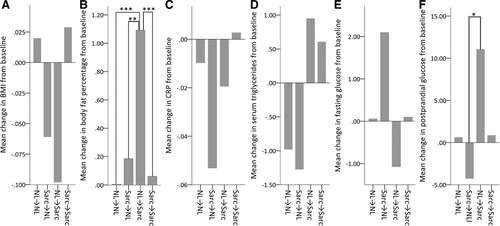当前位置:
X-MOL 学术
›
Ann. N. Y. Acad. Sci.
›
论文详情
Our official English website, www.x-mol.net, welcomes your
feedback! (Note: you will need to create a separate account there.)
Transitional states of sarcopenia: the trajectory of fat accumulation and glucose fluctuation on risk of metabolic syndrome
Annals of the New York Academy of Sciences ( IF 4.1 ) Pub Date : 2021-05-04 , DOI: 10.1111/nyas.14607 Shou-En Wu, Wei-Liang Chen
Annals of the New York Academy of Sciences ( IF 4.1 ) Pub Date : 2021-05-04 , DOI: 10.1111/nyas.14607 Shou-En Wu, Wei-Liang Chen

|
The association between sarcopenia and metabolic syndrome (MetS) has been well established. Nevertheless, the transition process between normal and low muscle mass (LMM) states and the effect of this transition on MetS has been less explored. Our study here examined whether the direction toward or away from LMM alters the risks of MetS. Initially, gene set enrichment analysis confirmed that MetS correlates with sarcopenia at the genetic level. Subsequently, 6476 eligible participants older than 60 years were enrolled between 2010 and 2016 at Tri-Service General Hospital, Taiwan for evaluation. We discovered an inverse association between the skeletal muscle mass percentage and the risk of MetS. Participants were categorized into four subgroups: state 1 (normal→normal), state 2 (LMM→normal), state 3 (normal→LMM), and state 4 (LMM→LMM). State 4 had increased hazard ratios (HRs) of MetS, while state 2 revealed decreased HRs of MetS, hypertension (HTN), and type II diabetes mellitus (T2DM). State 2 also showed decreased HRs for all five MetS components. Despite the fact that state 3 did not reach statistical significance, increased body fat percentage and glucose fluctuation were observed in this group. The transition direction toward LMM (states 3 and 4) showed deterioration in metabolic indices, leading to increased HRs for MetS, HTN, and T2DM. Conducting timely intervention during this transition process may effectively prevent adverse events accompanying LMM.
更新日期:2021-05-04











































 京公网安备 11010802027423号
京公网安备 11010802027423号